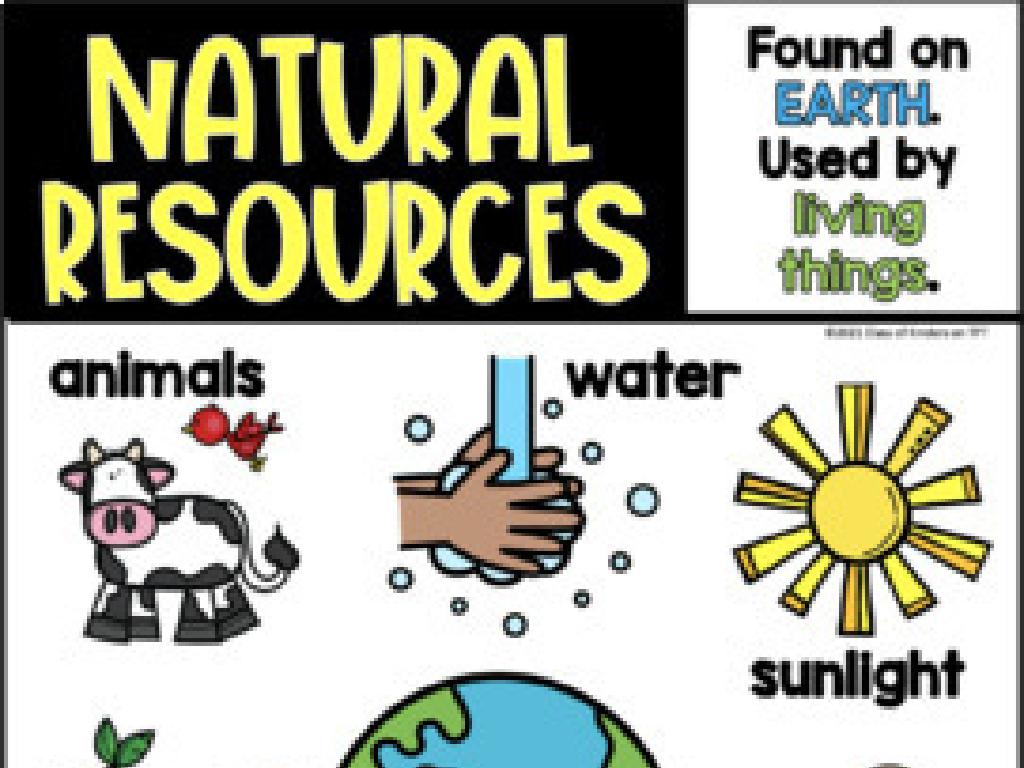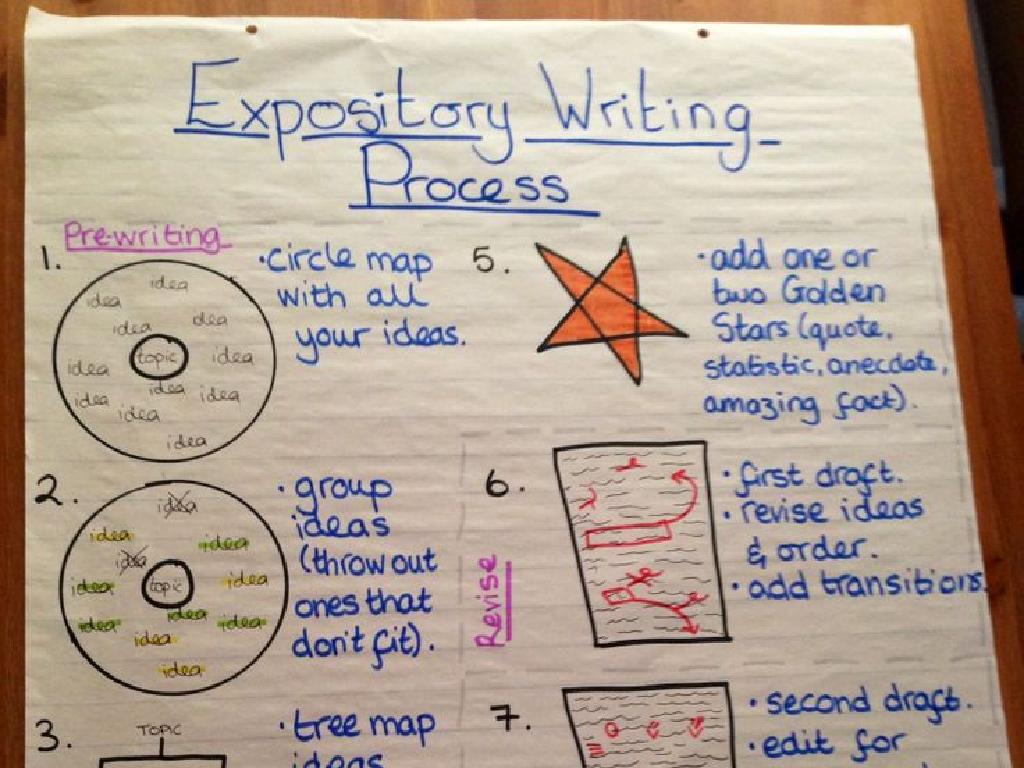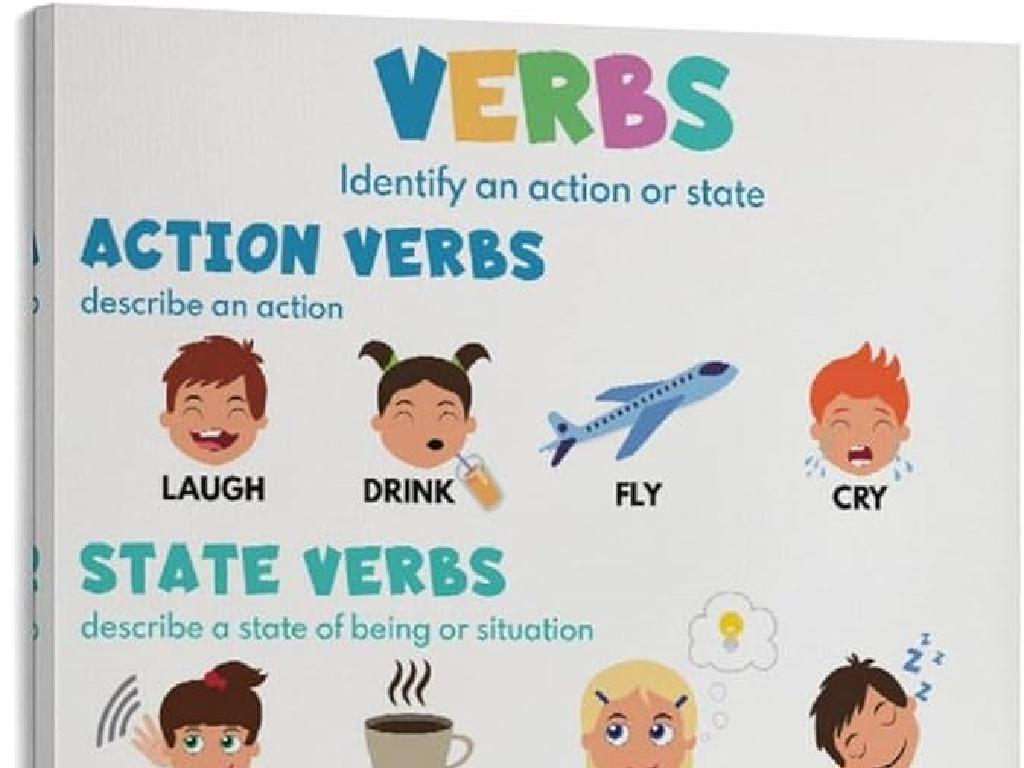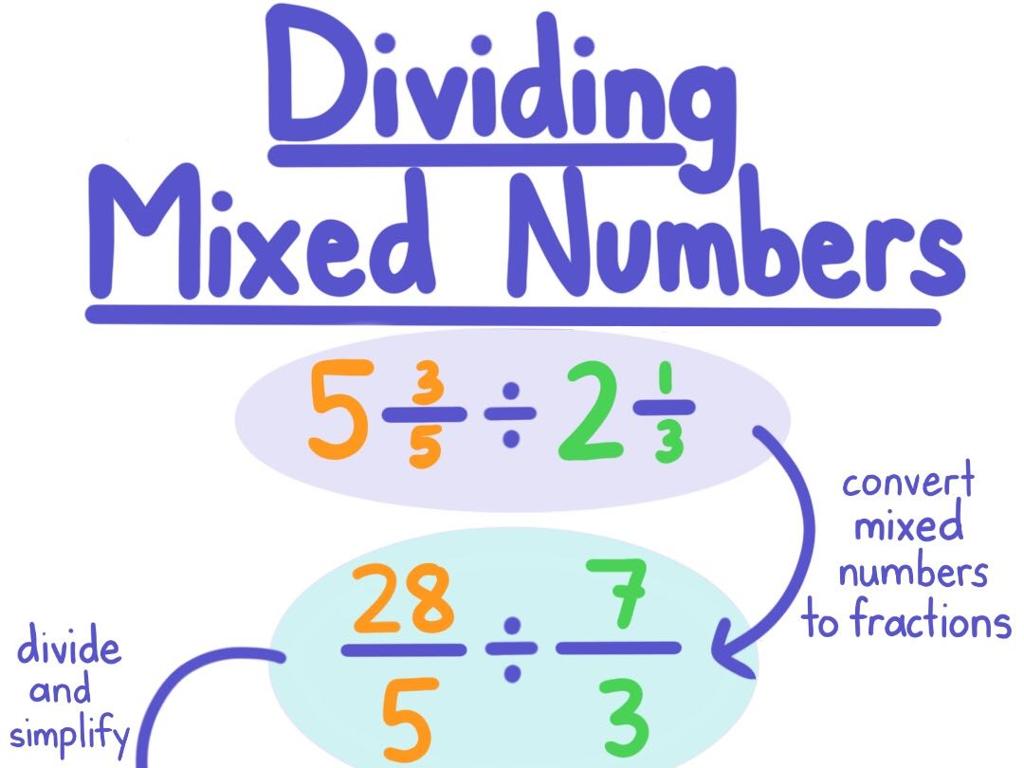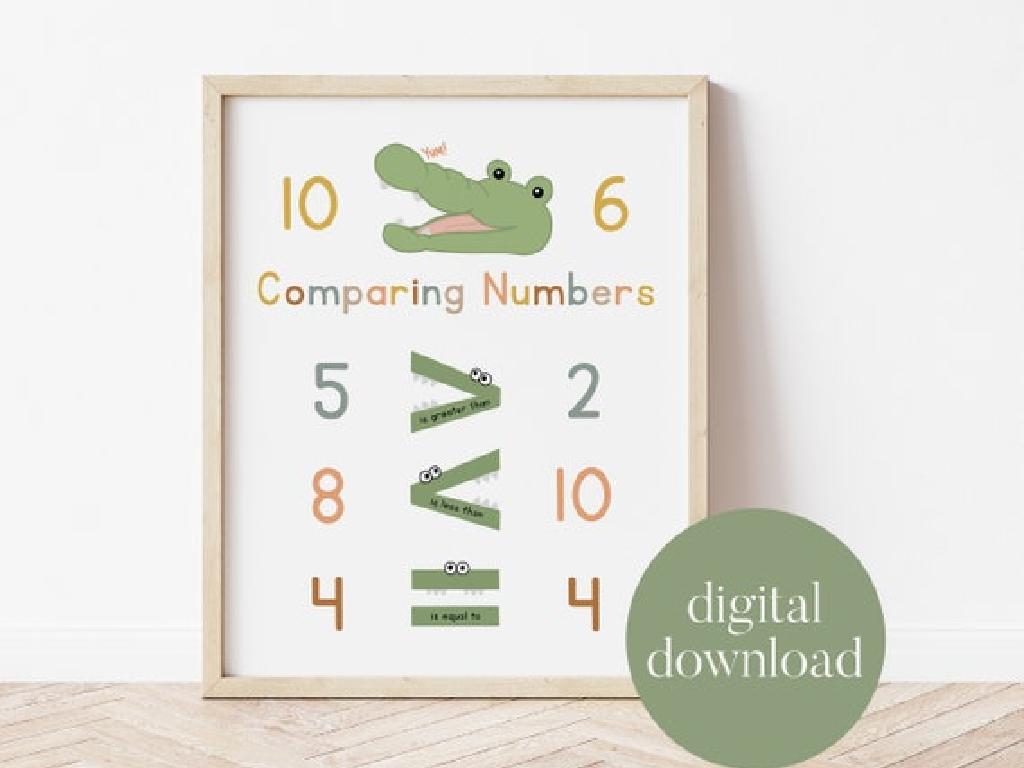Complete The Opinion-Reason-Example Table
Subject: Language arts
Grade: Third grade
Topic: Opinion Writing
Please LOG IN to download the presentation. Access is available to registered users only.
View More Content
Opinion Writing: Express Yourself!
– What is an opinion?
– An opinion is what you think or feel about something
– Importance of opinions
– Sharing opinions helps us understand each other
– Our lesson: Opinion-Reason-Example Table
– A tool to organize our thoughts on a topic
– Let’s practice sharing opinions
|
This slide introduces the concept of opinion writing to third-grade students. Begin by explaining that an opinion is someone’s personal thoughts or feelings about a subject, and it’s different from a fact, which is true for everyone. Emphasize the importance of opinions in helping us share our unique perspectives and contribute to discussions. Introduce the Opinion-Reason-Example Table as a structured way for students to organize their thoughts when writing about their opinions. Provide clear examples of how to use the table. For the activity, encourage students to think of a simple topic they have an opinion about and guide them to fill out the table with reasons and examples supporting their view. This will prepare them for more complex opinion writing tasks in the future.
Understanding Opinions in Writing
– Define an opinion
– An opinion expresses your feelings or thoughts about something.
– Opinions are personal
– Opinions are not about being right or wrong; they reflect your personal views.
– Opinions vs. facts
– For example, ‘Chocolate is the best flavor’ is an opinion, while ‘The sky is blue’ is a fact.
– Practice distinguishing
– We’ll learn to tell opinions apart from facts through examples.
|
This slide introduces the concept of opinions to third-grade students. Begin by explaining that an opinion is a personal belief or feeling about something and that everyone has different opinions. Emphasize that opinions are not about being right or wrong, unlike facts, which are true statements. Provide clear examples to illustrate the difference between opinions and facts. Engage the students with simple, relatable examples and encourage them to share their own opinions. This will set the foundation for them to understand how to express their opinions and support them with reasons and examples in their writing.
Why Share Opinions?
– Understanding each other
– Sharing opinions opens up ways to know what others think and feel.
– Expressing feelings & beliefs
– When we tell others what we believe, we show who we are inside.
– Learning from discussions
– Talking about different opinions introduces us to new ideas and knowledge.
– Building communication skills
– By sharing, we practice how to talk and listen to others, which is important.
|
This slide aims to explain to third-grade students the importance of sharing opinions. It’s crucial to convey that sharing opinions is more than just talking about what we like or don’t like; it’s a way to connect with others, express our inner thoughts and feelings, and grow our understanding of the world. Encourage students to think of times when they learned something new by listening to someone else’s opinion. Activities can include group discussions, partner exchanges, or even a class debate. The goal is to foster an environment where students feel safe and valued when expressing their thoughts and to teach them to respect and consider the opinions of others.
Crafting Opinions with the Opinion-Reason-Example Table
– What is an Opinion-Reason-Example Table?
– A chart to sort your opinion, reasons for it, and examples.
– Why use this opinion-writing tool?
– It helps us explain why we think what we think.
– How to fill out the table
– Write your opinion in the first column, reasons in the second, and examples in the third.
– Practice using the table together
– We’ll do an example as a class to understand how to use it.
|
This slide introduces the Opinion-Reason-Example Table, a structured approach to opinion writing. Begin by explaining the table’s purpose: to help students clearly organize their thoughts and support their opinions with reasons and examples. Emphasize the importance of backing up opinions with solid reasons to make their writing more persuasive. Demonstrate how to use the table by filling in each column step by step. For the class activity, choose a simple opinion topic and work through the table together, encouraging students to contribute ideas for each column. This will prepare them to use the table independently for their own opinion pieces.
Completing the Opinion-Reason-Example Table
– Write your opinion in column one
– List reasons for your opinion
– Think: Why do you think this way?
– Give examples for each reason
– Examples make your reasons stronger
– Share your table with the class
|
This slide is designed to guide third-grade students through the process of completing an opinion-reason-example table as part of learning opinion writing. Start by having students write a clear opinion statement in the first column of their table. Next, instruct them to brainstorm and list reasons supporting their opinion in the second column, encouraging them to think deeply about why they hold that opinion. Then, have them provide concrete examples that illustrate each reason in the third column, which helps strengthen their argument. Finally, create an opportunity for students to share their tables with the class, fostering a discussion that can help them understand different perspectives and the importance of supporting their opinions with reasons and examples. The teacher should circulate the room, providing assistance and ensuring that examples are relevant and supportive of the reasons given.
Opinion Writing: Healthy School Lunches
– Forming our class opinion
– ‘School lunches should include more fruits’
– Listing reasons for our opinion
– Healthy, Tasty, Variety
– Giving examples for each reason
– Apples are nutritious, Fruit salads are delicious, Different fruits every day
– Completing our opinion table
|
This slide is designed to guide the class through a collaborative activity where we will complete an opinion-reason-example table together. The opinion we’ll work on is that ‘School lunches should include more fruits.’ Start by discussing why it’s important to have fruits in school lunches, focusing on health benefits, taste, and the variety they offer. Then, provide specific examples for each reason: apples for nutrition, fruit salads for a tasty option, and a rotation of different fruits to keep lunchtime exciting. Encourage students to think of their own examples and reasons as well. This activity will help students understand how to support their opinions with solid reasoning and examples in their writing.
Your Turn: Create Your Opinion Table!
– Think of your own opinion
– What reasons support your opinion?
– Reasons are why you think this way
– Can you give examples for each reason?
– Examples make your reasons stronger
– Fill in your opinion table
|
This slide is an interactive activity for students to apply their understanding of opinion writing. Students should think of an opinion on a topic they are passionate about. They will then need to articulate reasons supporting their opinion and provide concrete examples that illustrate their reasons. This exercise helps students practice structuring their thoughts in a logical manner and reinforces the concept of using evidence to support opinions. Teachers should circulate the room to assist students, provide feedback, and ensure that each student can come up with at least one reason and example. Possible activities include sharing opinions with a partner, creating a poster of their table, or writing a paragraph using their table as a guide.
Class Activity: Share Your Opinions
– Pair up and share opinion tables
– Discuss your reasons and examples
– Why did you think your reason supports your opinion?
– Prepare to present to the class
– Choose one table to present and explain
– Reflect on the activity
– Think about what you learned from your partner
|
This activity is designed to foster communication and critical thinking among students. They will work in pairs to exchange their completed opinion-reason-example tables and discuss their thought process behind their choices. Encourage them to understand each other’s perspectives and the rationale behind their opinions and examples. After the discussion, select a few pairs to present their tables to the entire class, which will help students learn to articulate their thoughts clearly and listen to others. Conclude the activity by asking students to reflect on what they learned from their partner’s opinions and how it might influence their own thinking. This will help them appreciate diverse viewpoints and reinforce the concept of supporting opinions with reasons and examples.
Conclusion & Reflection on Opinion Writing
– Celebrate completing opinion tables
– Reflect on sharing your opinions
– How did it feel to tell others what you think?
– Understand the value of your opinions
– Your thoughts matter and are important.
– Recognize the uniqueness of your thoughts
– No one else thinks exactly like you do!
|
This slide is meant to wrap up the activity on opinion writing and to encourage students to reflect on the experience of sharing their own opinions. Emphasize the importance of each student’s unique perspective and reassure them that their thoughts are valuable. Encourage students to discuss how they felt during the activity and what they learned about expressing their opinions. This reflection helps to build their confidence in writing and sharing their ideas. As a follow-up, you could have students write a short paragraph about their experience or discuss in small groups.

